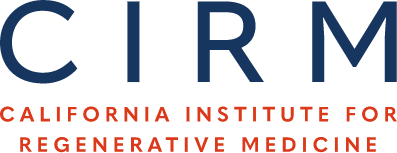Disease Team Planning
RFA07-04: CIRM Disease Team Planning Award
Pluripotent stem cells have the potential to play a role in the development of treatments and diagnostics for chronic disease and serious injury. To date only a handful of stem cell-based therapies have progressed into clinical testing and practice. In part, this is because stem cell research is an emerging field. The purpose of the CIRM Disease Team Initiative is to explore a new method of integrating and organizing the highest quality basic, translational and clinical stem cell research with the specific aim of producing a therapy or diagnostic for a particular disease or serious injury. This approach allows the use of innovative research models such as requiring active team management and emphasizing defined milestones to better support and to accelerate research that is poised for the development of stem cell-based treatments. The Disease Team Initiative has three parts: a Workshop (held July, 2007), Planning Awards (which are the subject of this Request for Applications (RFA 07-04)), and the Disease Team Research Awards (which will be the subject of a subsequent RFA). This Disease Team Planning Award (RFA 07-04) will support up to six months of planning and proposal development for the Disease Team Research Awards
Application Instructions
You will need a fully functional copy of Adobe Acrobat version 7 or 8 (Standard or Professional) to complete, print, and save the Information Form of the application. For optimal performance, we recommend that you upgrade to Adobe Acrobat (Standard or Professional) version 8.1. Using Adobe Acrobat Reader will not permit you to save information that is entered in the form.
All application materials must be received by the California Institute for Regenerative Medicine (CIRM) both electronically and in hardcopy no later than 5:00 pm PST on January 31, 2008. No exceptions will be made. Applications will only be accepted from Principal Investigators (PIs) that: 1) have been officially nominated by their home institution on a Candidate Nomination Form (CNF); and 2) have submitted a Letter of Intent (LOI) that was accepted by CIRM.
A complete application includes the following three parts:
Application Information Form with Signature Page (pdf form)
Disease Team Planning Award Proposal (MS Word template)
Biographical Sketch for the Principal Investigator (MS Word template)
You must download and save a copy of the templates for the Application Information Form, Disease Team Planning Award Proposal, and Biographical Sketch for the Principal Investigator onto your computer. Do not open the documents directly from the CIRM web page as the forms will not function properly. Open and use the saved copies on your computer instead.
You must submit application materials both electronically and in hardcopy (original plus 5 copies, preferably double-sided) as instructed below. The original hardcopy must be signed by the PI and the institution’s Authorized Organizational Official (AOO). The AOO is the individual, named by the applicant organization, who is authorized to act for the applicant organization and to assume the obligations imposed by the laws, regulations, requirements, and conditions that apply to grant applications or grant awards. CIRM will not accept an application without these original signatures.
How to Apply: Download and save a copy of the templates for the Application Information Form, Disease Team Planning Award Proposal, and Biographical Sketch for the Principal Investigator onto your computer.
Complete, save, and print the Application Information Form with Signature Page using the template provided. Be sure to provide all required information and observe indicated character limits.
Complete, save, and print the Disease Team Planning Award Proposal using the template provided. The proposal may include tables and figures. CIRM will not accept pages that exceed the indicated page limit for each section. We recommend that you convert the document into a PDF file to ensure that figures, tables, and formatting are preserved when submitting the application to CIRM.
Use the template provided to complete the Biographical Sketch for the Principal Investigator. The biosketch should be assembled into a single document observing the two page limit. We recommend that you convert the final document into a PDF file to ensure that formatting is preserved.
Send electronic copies of all three parts of the application as attachments in a single email to PlanningAwards@cirm.ca.gov. This email must be received by CIRM no later than 5:00 pm PST, January 31, 2008. No exceptions will be made. Applicants will receive an email reply confirming that the proposal was received by CIRM.
All hardcopy application materials, including the Application Information Form with original signatures, the Disease Team Planning Award Proposal, and the Biographical Sketch for the Principal Investigator must be received by CIRM no later than 5:00 pm PST, January 31, 2008. No exceptions will be made. Mail the completed original plus 5 copies (preferably double-sided) to:
Disease Team Planning Award Application
California Institute for Regenerative Medicine
210 King Street
San Francisco, CA 94107
Applications will only be accepted that have met both electronic and hardcopy submission requirements by the deadline of 5:00 pm PST, January 31, 2008. No exceptions will be made.
Contact Information For information about the Disease Team Planning RFA:
Bettina Steffen, M.D., Scientific Officer
Email: bsteffen@cirm.ca.gov
Phone: (415) 396-9120
FAX: (415) 396-9141
For programmatic information:
Patricia Olson, Ph.D., Interim Chief Scientific Officer
Email: polson@cirm.ca.gov
Phone: (415) 396-9116
FAX: (415) 396-9141
For information about the review process:
Gil Sambrano, Ph.D., Senior Officer for Grants Working Group
Email: gsambrano@cirm.ca.gov
Phone: (415) 396-9103
FAX: (415) 396-9141



